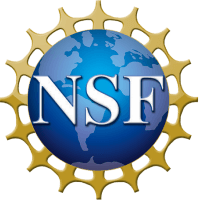RSS feed source: National Science Foundation
Synopsis
The NSF Trailblazer Engineering Impact Award (TRAILBLAZER) program supports individual investigators who propose novel research projects with the potential to innovatively and creatively address national needs and/or grand challenges, advance US leadership, and catalyze the convergence of engineering and science domains. TRAILBLAZER will support engineers and scientists who leverage their distinctive track record of innovation and creativity to pursue new research directions that are distinct from their previous or current research areas.
All funded TRAILBLAZER projects will form an NSF TRAILBLAZER cohort, and principal investigators will be expected to participate in an annual meeting. TRAILBLAZER investigators may also be invited to additional activities.
INFORMATIONAL WEBINAR: The Emerging Frontiers and Multidisciplinary Activities (EFMA) Office will host an informational webinar on October 15, 2024 to discuss the TRAILBLAZER program and answer questions about the FY 2025 TRAILBLAZER solicitation. Details on how to join this webinar will
Click this link to continue reading the article on the source website.

